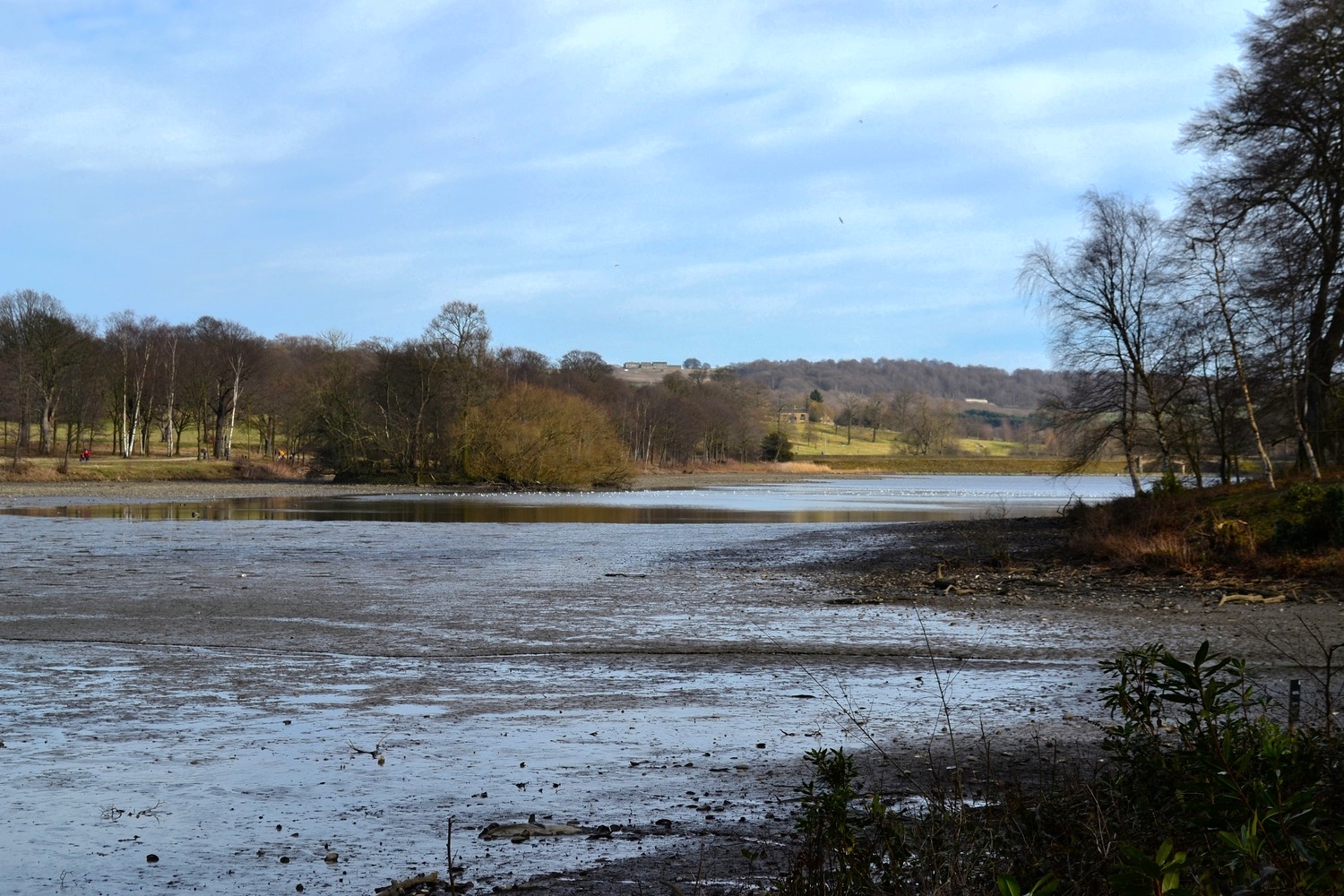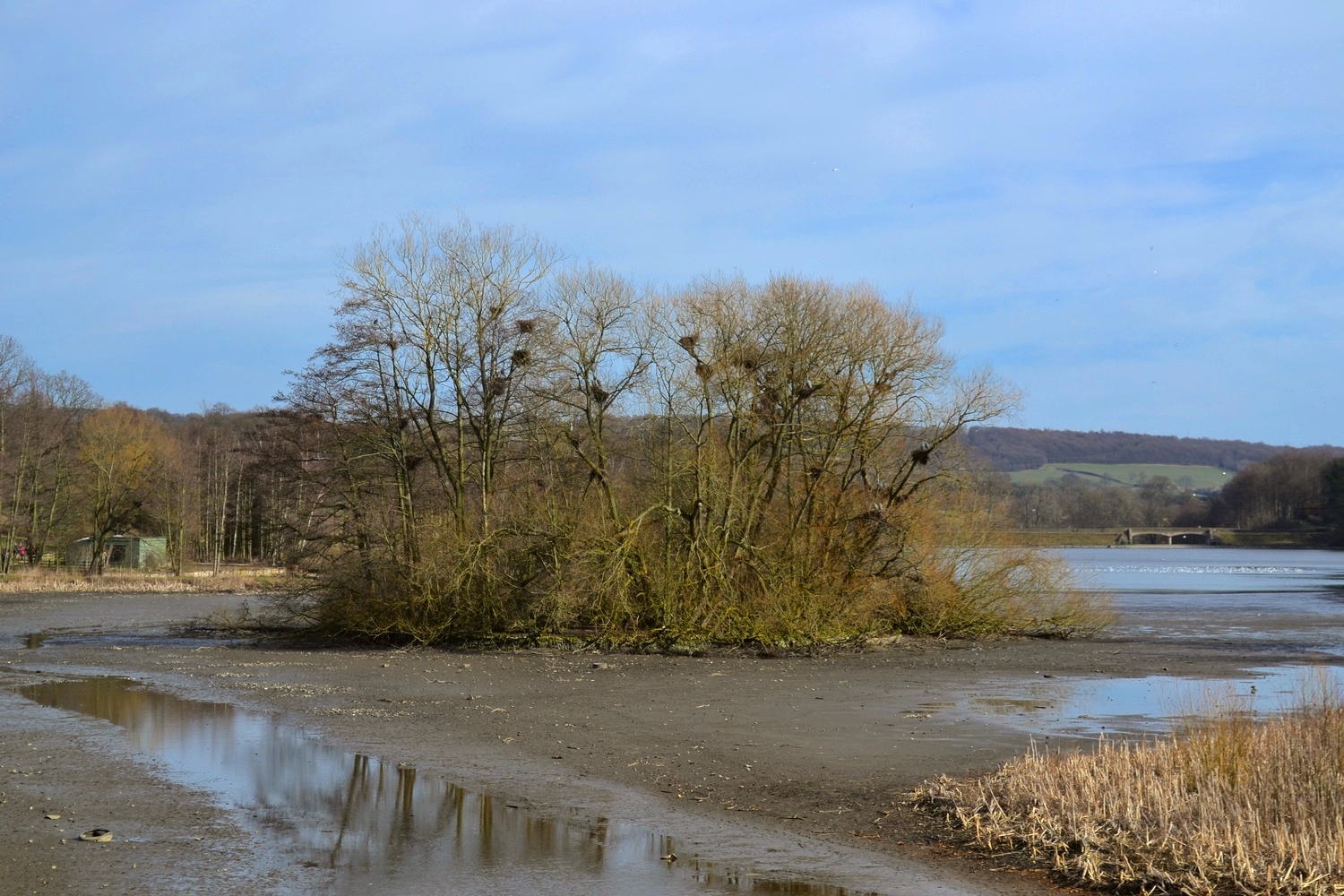The first weekend in March I had the pleasure of taking advantage of a friend with a car. I love that occasional option. We also had the good luck of fair weather. Pretty warm, a warm strong wind, and sun. Taking advantage of these serendipities, we drove south to the Yorkshire Sculpture Park. YSP is an open-air sculpture park merging an appreciation of art and nature. Aside from parking it is free to visit. The park is sprawling with fields, a pond, scattered buildings, and some sections of wild growth and trees. Footpaths lead throughout the park and you may even encounter the periodical grazing cow. The whole park is generally more ‘open’ than I expected. I always seem to anticipate more trees in the UK than is realistic.
The facilities included a café with surprisingly decent soy cappuccinos, a shop (of course), and gallery spaces including a multi-room exhibition of Henry Moore drawings, prints, and small works. It was nice to see these small works from a man known for large, public bodies. His prints are actually very nice things. There are of course, many Moore sculptures in the park. Unfortunately, most of the sculptures have low barricades preventing viewers from intimately encountering the works. One of the great parts on strong, open-air works is the ability to touch them and feel the seamless connection of art and environment. Ah well, I am sure the works are safer this way.
'Seizure'. Photo courtesy of YSP.
Right after wandering through the Henry Moore exhibit, the first outside work we encountered was Roger Hiorns’ installation ‘Seizure.’ In 2008, Hiorns was commissioned by Artangel and the Jerwood Charitable Foundation to complete the work in an empty flat in Southwark, London. The social housing block was scheduled to soon be demolished. Hiorns filled the flat with 75,000 liters of liquid copper sulphate so that blue crystals grew and took over the space. Due to the works’ popularity the Arts Council acquired the work and moved the 31 ton piece to YSP on a 10 year lease. YSP built a concrete structure specifically to house and preserve the work. Only five people are allowed at a time into the small flat, wearing little booties, to help conserve the delicate work. It is amazing! I don’t know why I did not insist we see the work at the end of the day again. There is something just surreal about being surrounded by sharp, delicate crystals all of a sparkling blue. I highly recommend experiencing this work first hand. Though the removal of the work from its original context removed some of the work’s meaning, the sheer aesthetics of it remains top notch.
One of my favorite permanent installations was the Camellia House. Within the conservatory structure were a few stone sculptures, busts, a water fountain, and dozens of blooming rose bushes. The roses filled the room, climbing to the ceiling, over spilling from open windows, and filling the space with a light, oxygenized fragrance. I would love to have one of those in my imaginary house. The windows, sun, pink roses, dark green leaves, gurgling water, and stone walls belong in some period romance movie.
Located throughout the scattered buildings were various temporary exhibits. In the chapel near the Ai Weiwei ‘Iron Tree’ sculpture was a film by Nick Crowe and Ian Rawlinson entitled ‘Song for Coal.’ The chapel was ridiculously dark but once you adjusted to your fear of tripping, the kaleidoscopic stained glass projection was beautiful and simple. The music dominated the chapel’s atmosphere with Opera North’s performance of the artists’ reworking of ‘The Coal Catechism’ (1898) by William Jasper Nicolis. Though the vocals were in English, I still could only understand some of the words.
View from inside the Camellia House, Two women talking. 2015.
On the grounds there were ganders of geese, flocks of ducks, a great tree of nesting herons, and just hordes of floating seagulls. So many birds, all situated around the low-leveled pond. The water level was so low the stepping stones over an inlet in pond barely had water between them at all! I imagine post winter the levels will raise again.
Overall, I loved this park. Having good weather made a huge difference in my experience and I would recommend trying for a nice day so you may stay longer. I imagine in the summer the plants are lovely. Even in winter though, the grass is always green in England. There were generally less outdoor artworks than I expected but more wandering paths. The balance is nice and I can only hope in the summer once the ground is dry, the barricades will be removed from works where possible. This is a great family place and children played ball, tag, had picnics with their families, and dogs wagged their happy tails (on leashes). I rate YSP an 8 out of 10. And that's not bad at all.
From the Gate & Dam Head Bridge, 2015.











